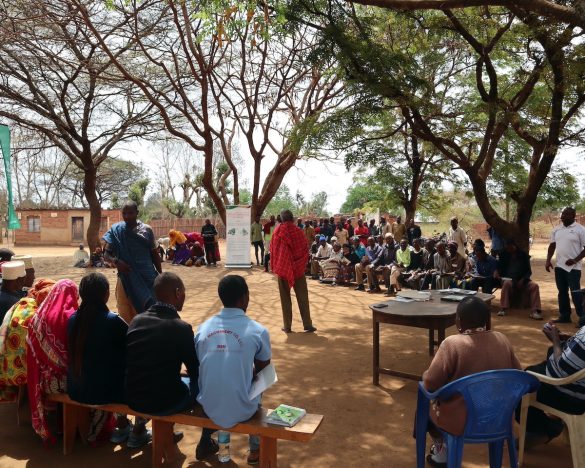Baseline survey results, project mapping and monitoring tool main focus at annual Africa RISING M&E meeting
Warning: Trying to access array offset on value of type bool in /home/africarising/public_html/wp-content/plugins/slideshare/slideshare.php on line 162
Warning: Trying to access array offset on value of type bool in /home/africarising/public_html/wp-content/plugins/slideshare/slideshare.php on line 165

The Africa RISING program held its third program-wide monitoring and evaluation (M&E) meeting on 13-14 November 2014 in Arusha, Tanzania. The meeting is held annually to discuss implementation of the monitoring and evaluation component of the program and focus on possible areas of improvement. The first M&E meeting took place in Addis Ababa, Ethiopia from 5-7 September 2012 and paved the way for the M&E work in the program. The second meeting took place in the same location from 11-13 November 2013 revealed the importance of moving M&E much closer to the heart of Africa RISING’s research.
This year’s meeting – which was organized back to back with the second annual program-wide learning event – focused on:
- Discussing preliminary results from the Africa RISING Baseline Evaluation household and community Surveys (ARBES) data collection;
- Fine-tuning the usability of the Project Mapping and Monitoring Tool (PMMT)
- … And defining M&E activities for 2015 and 2016.
Results from the ARBES survey generated a lot of interest and discussions among participants during the two-day meeting because, for the first time since the start of the program, data about the economic, human, environmental, social and productivity impacts of the Africa RISING program were available.

“These results show real promise for the direction we can head to in terms of sustainable intensification. So we see this framework as a possible way of linking across geographies and also across dimensions. This is a big step for the sustainable intensification concept,” noted Dr. Jerry Glover, Senior Sustainable Agricultural Systems Advisor at the United States Agency for International Development (USAID).
Regarding the utility of the PMMT, scientists suggested that the capability for uploading data even in circumstances where internet connectivity is a problem would greatly enhance usability of the system in such areas. Research teams also proposed more capacity development as a strategy to improve usability of the PMMT. And they pointed to the issue of irregular data uploads into the system – to which it was proposed that a longer term solution could be to employ specific staff with direct responsibility for data input.
Other aspects covered – albeit quite briefly – during the annual M&E meeting concerned: the recent evaluation of the West Africa project, the program evaluation design, concrete experiences on the ground using M&E tools, possible applications of and reflections about ex-ante analysis of crop outcomes and data management.
The meeting participants concluded that despite the difficulty in bringing monitoring and evaluation at the centre of the program, the efforts of the M&E team led to a very robust baseline survey and a potentially extremely useful tool (the PMMT), whi=ch could even be adapted to various other applications and programs. The M&E team, a group of HarvestChoice researchers affiliated with the International Food Policy Research Institute (IFPRI), also mentioned that their role ought to be re-examined for the next two years: now that most M&E tools have been put in place a new monitoring and evaluation phase is starting, around ongoing data collection by the field teams and preparing to scale the program up and out with the help of internal and external evaluations.
Next year’s monitoring and evaluation meeting may be quite a different ‘animal’ altogether…
Read notes from the meeting
See presentations from this meeting and others related to M&E in Africa RISING
See pictures from the meeting
See the Project Mapping and Monitoring Tool (PMMT) in practice
Read more about M&E activities in the program, including M&E staff interviews




